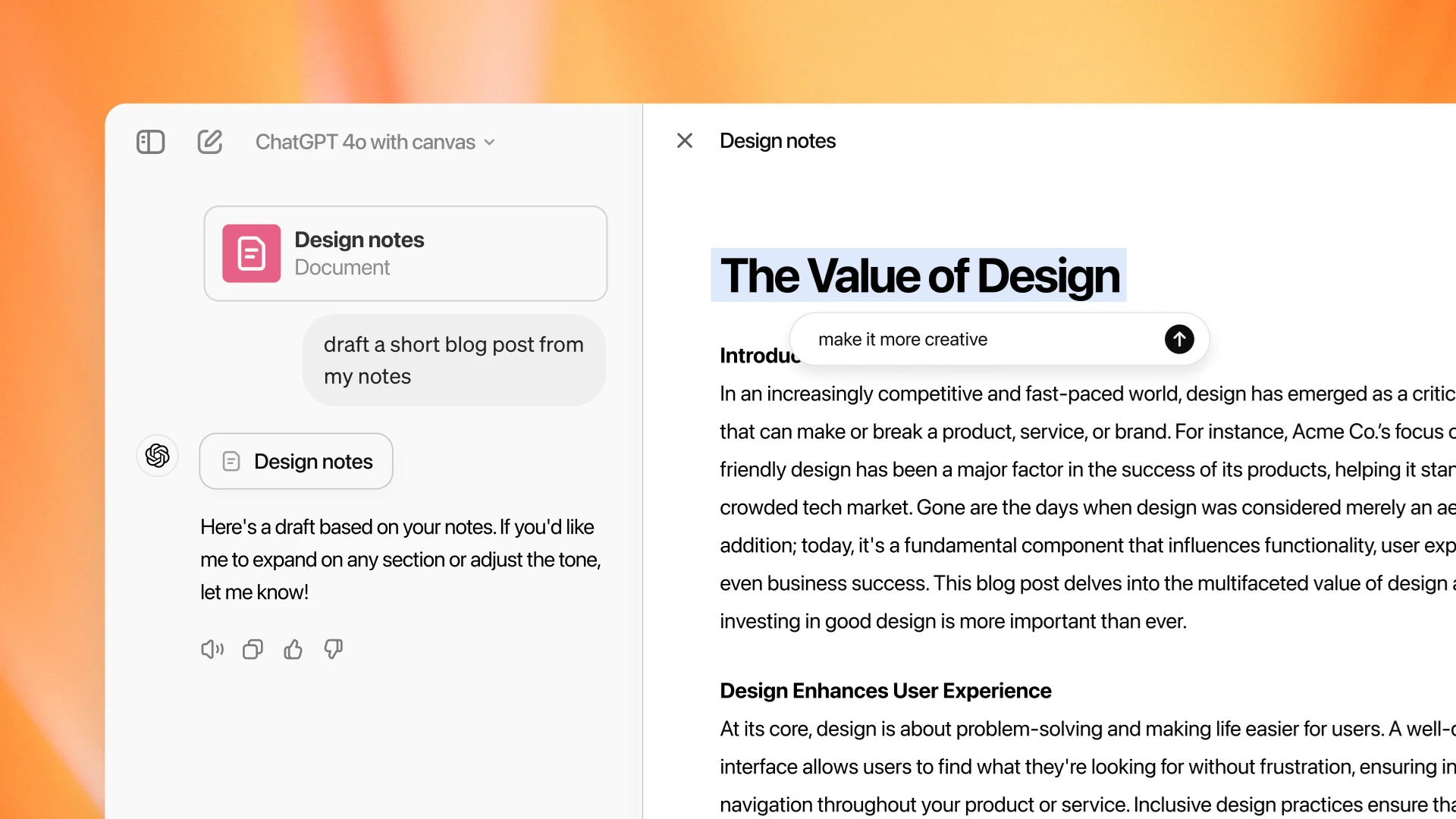ChatGPT's Canvas feature is a real-time editor to inspire your writing and coding
Imagine a less annoying Clippy, eager to help you write and code

- The fourth day of 12 Days of OpenAI brought Canvas out of beta for all ChatGPT users.
- This is a new feature for editing text and code, focusing on collaboration.
Day four of OpenAI's 12 Days of OpenAI is looking to make ChatGPT more collaborative with the general release of Canvas. The feature, first released in beta a few months ago, places responses from the AI chatbot on a shared, editable page.
Imagine Clippy from Microsoft Word, except powered with advanced AI and without the annoying avatar taking up space on the screen. There are a lot of uses for Canvas, especially with the upgrades added to the feature for the wide release.
With Canvas, you collaborate with ChatGPT on writing and coding projects. You can request help writing and editing text or even code within the Canvas page, then highlight whichever bits of the chatbot's response you want changed.
Rather than getting a static response and copying it elsewhere to tweak, you can edit directly within the Canvas interface, commenting on parts of the AI's response with a prompt for how to change it. Imagine a real-time partnership with a human co-writer or co-programmer, but much faster.
If you drop a large chunk of already written text into Canvas, the AI will acknowledge it with a “Get Advice” or “Help Me Write” pop-up button. You have to assign edits before the AI starts making changes, which OpenAI pitches as a way of making sure you retain control of the content. You can get the AI to comment on your work if you don't want ChatGPT to rewrite your text. The results are suggestions and ideas without a total rewrite.
Canvas code and custom GPTs
Programmers keen on AI assistance can use Canvas to help with editing. The AI will debug, offer ideas for improvement, or comment on the program much like it does with text. This also extends to emojis, and simply pasting code into Canvas will automatically make the AI chatbot go into code editor mode.
The biggest upgrade for the general release is that Canvas can now edit and translate code into Python. There's also a new “Run” button that will execute the written code, allowing you to see the output in a console window. Any errors are pinpointed and identified, and the AI will suggest how to fix them or offer to fix them for you.
Get daily insight, inspiration and deals in your inbox
Sign up for breaking news, reviews, opinion, top tech deals, and more.
The other notable aspect of the new version of Canvas is its integration with Custom GPTs, the specialized versions of the AI chatbot that you can create yourself. It's now possible to embed Canvas into a Custom GPT. There are a lot of possibilities for personalization by combining Canvas and Custom GPTs. For instance, imagine a Custom GPT designed for editing short stories, providing detailed feedback as you write, or a data analysis GPT that uses Canvas to run Python scripts.
If you're keen to give Canvas a go, it's available in this first non-beta release for ChatGPT users now.
You might also like

Eric Hal Schwartz is a freelance writer for TechRadar with more than 15 years of experience covering the intersection of the world and technology. For the last five years, he served as head writer for Voicebot.ai and was on the leading edge of reporting on generative AI and large language models. He's since become an expert on the products of generative AI models, such as OpenAI’s ChatGPT, Anthropic’s Claude, Google Gemini, and every other synthetic media tool. His experience runs the gamut of media, including print, digital, broadcast, and live events. Now, he's continuing to tell the stories people want and need to hear about the rapidly evolving AI space and its impact on their lives. Eric is based in New York City.